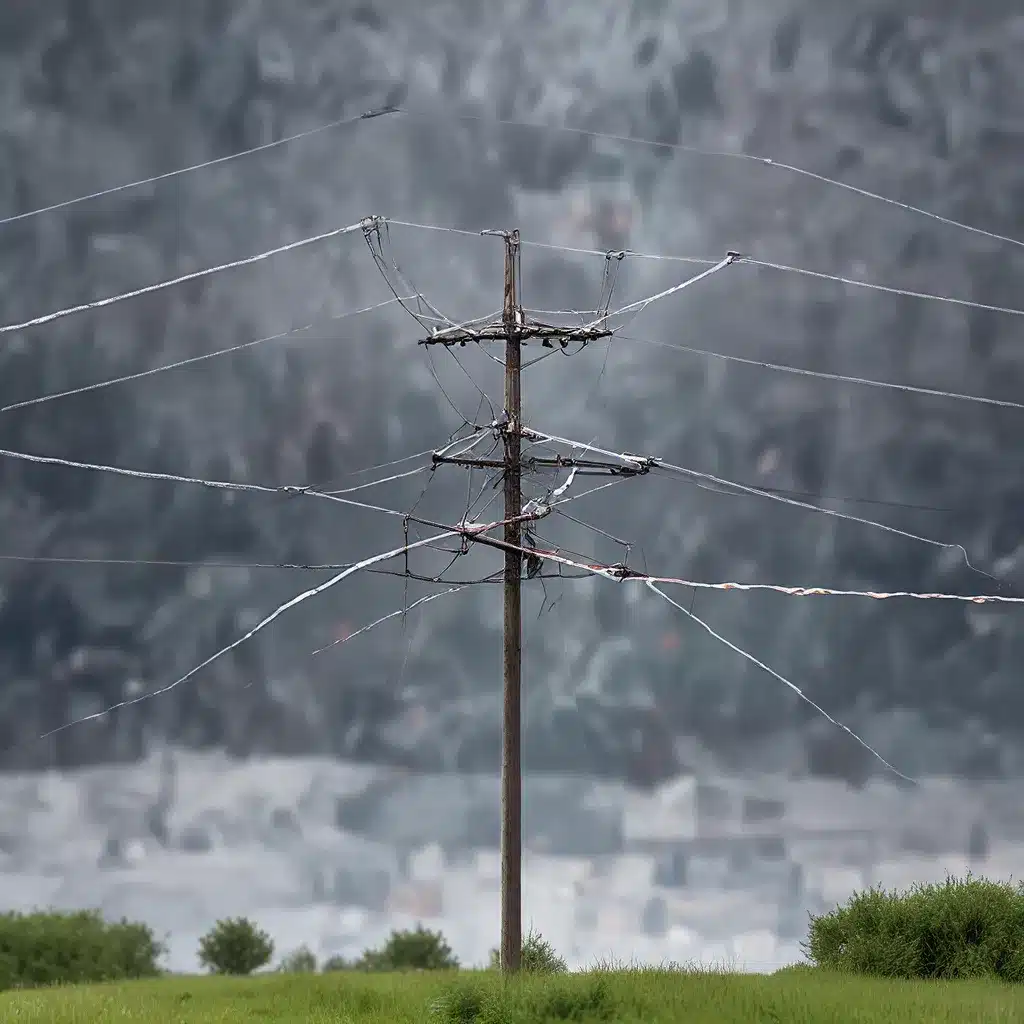
Empowering Sensor Networks for Reliable Performance in Challenging Environments
Wireless sensor networks (WSNs) have become essential components of the Internet of Things (IoT), enabling a wide range of applications, from environmental monitoring to industrial automation. However, the deployment of these networks in extreme weather conditions can present significant challenges that threaten their resilience and reliability. Developing robust distributed algorithms and protocols is crucial to ensuring the continued operation of sensor networks, even in the face of natural disasters or other adverse environmental factors.
Adaptive Topologies for Extreme Environments
One of the primary concerns in designing resilient WSNs for extreme weather conditions is the network topology. Traditional static topologies, such as star or mesh configurations, may be vulnerable to the impact of high winds, floods, or other severe events. Distributed algorithms that enable dynamic reconfiguration of the network topology can help sensor nodes adapt to changing environmental conditions, ensuring uninterrupted data collection and communication.
Research has shown that self-organizing, self-healing topologies can significantly improve the resilience of WSNs in extreme weather conditions. These algorithms allow sensor nodes to continuously monitor the network status, detect failures or disruptions, and automatically reorganize the network structure to maintain connectivity and data flow. By leveraging redundant pathways and dynamic routing protocols, sensor networks can reroute data around damaged or unavailable nodes, ensuring the reliable delivery of critical information.
Energy-Efficient Designs for Extended Operational Lifetimes
Another key challenge in deploying WSNs in extreme environments is the limited energy resources of sensor nodes. Harsh conditions, such as intense sunlight or extreme temperatures, can quickly deplete battery power, leading to premature network failures. Distributed algorithms that prioritize energy-efficiency are crucial for maintaining the long-term viability of sensor networks in these settings.
Innovative techniques like duty-cycling, energy harvesting, and load balancing can help optimize the power consumption of sensor nodes, extending their operational lifetimes. Distributed algorithms can coordinate the sleep/wake cycles of nodes, ensuring that only a subset of the network is active at any given time, while the remaining nodes conserve energy. Energy harvesting technologies, such as solar panels or piezoelectric generators, can further supplement the power supply, reducing the reliance on battery resources.
Secure Communication and Data Integrity
In addition to resilience and energy efficiency, security is another critical concern for WSNs operating in extreme weather conditions. Sensor nodes deployed in remote or exposed locations are vulnerable to various cyber threats, including data tampering, node capture, and denial-of-service attacks. Distributed algorithms that incorporate robust security measures are essential to protect the integrity of sensor data and the overall network infrastructure.
Lightweight cryptographic protocols, secure routing algorithms, and intrusion detection systems can help WSNs defend against malicious actors, even in the face of physical damage or disruptions. By leveraging distributed trust models and secure key management, sensor networks can ensure the confidentiality and authenticity of the data they collect, enhancing their value and reliability for critical applications.
Coordinating Sensor Networks for Disaster Response
One of the most promising applications of resilient WSNs in extreme weather conditions is their ability to support disaster response and recovery efforts. By deploying sensor networks in areas prone to natural disasters, such as hurricanes, floods, or wildfires, first responders can gain real-time visibility into the evolving situation, enabling more effective coordination and decision-making.
Distributed algorithms that facilitate the rapid deployment and self-organization of sensor networks can help establish communication and monitoring capabilities in the aftermath of a disaster, even when traditional infrastructure is disrupted. These networks can provide critical data on factors like environmental conditions, structural integrity, and resource availability, empowering emergency services to prioritize their response and allocate resources more efficiently.
Towards a Resilient and Sustainable Sensor Network Future
As the world faces the increasing frequency and intensity of extreme weather events, the need for robust, resilient, and sustainable sensor networks has never been more pressing. By developing and implementing distributed algorithms that address the unique challenges of these environments, researchers and engineers can unlock the full potential of WSNs to enhance disaster preparedness, critical infrastructure monitoring, and environmental preservation.
Through continued innovation and collaboration, the sensor network community can pave the way for a future where connectivity, data integrity, and energy efficiency are not just aspirations, but the foundational principles that underpin the reliable and resilient performance of IoT ecosystems, even in the face of the most extreme weather conditions.